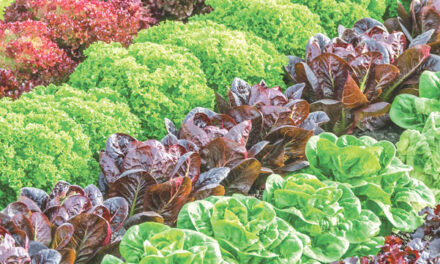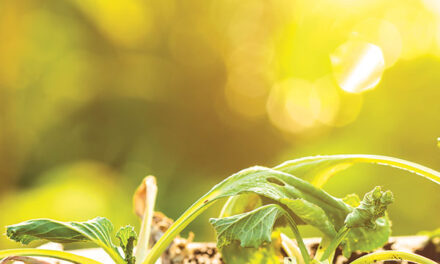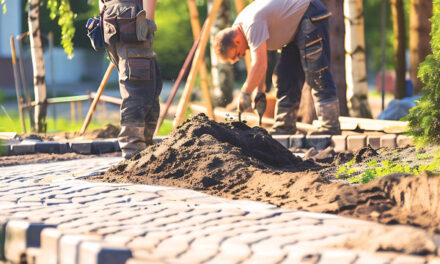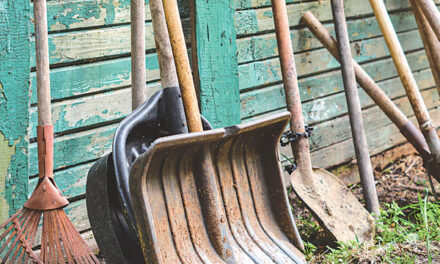Admit it, you’re longing for big, bodacious tomatoes.
We’re not talking about commercially grown processing tomatoes—those thick-skinned orbs that escape trucks and bounce down Interstate 5. Great tomatoes are home grown. And Sacramento’s long, warm growing season is ripe for the tastiest tomatoes on the planet.
Tomatoes are the most popular home garden vegetable in the country. The bacon, lettuce and tomato sandwich, featuring thick slabs of fresh-plucked tomato, is reason enough for the popularity. But BLTs aren’t the only perk.
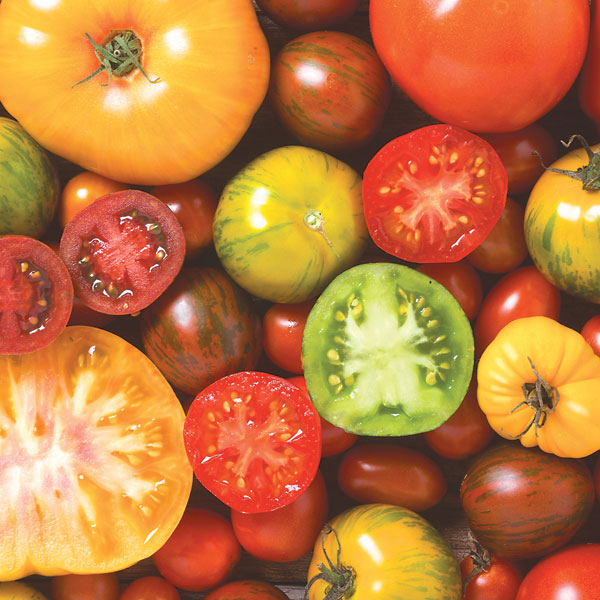
Packed inside a homegrown tomato’s soft “dad bod” are vitamins C and A and the powerful antioxidant lycopene.
A medium-sized tomato has a mere 35 calories. Its versatility in the kitchen is the stuff of culinary legend. Tomatoes can be eaten raw, juiced, pickled, stewed, baked, canned, dehydrated, sun-dried and fried. Even people who find tomatoes distasteful often love them in spaghetti sauce, salsa, ketchup or slathered atop pizza.
Botanically speaking, the tomato is a fruit because it has seeds and develops from the flower’s ovary. Legally, tomatoes are a vegetable because the U.S. Supreme Court unanimously ruled it so for tax and tariff purposes in 1893. “Knowledge is knowing that a tomato is a fruit. Wisdom is not putting it in a fruit salad,” said British journalist Miles Kington.
Sacramento enjoys an abundance of warm, sunny days and tomatoes require at least eight hours of daily sunlight to thrive and produce. If your garden is shaded by trees or buildings most of the day, a farmer’s market or community garden plot may be a viable alternative.
Soil means everything to edible gardens. A soil test will reveal shortcomings that should be addressed. If you know your soil, amend it with a two-inch layer of compost, an organic fertilizer or nutrient-rich worm castings (worm poop). Worm castings are expensive, but you can learn to build and maintain your own home “worm farm” by visiting sacmg.ucanr.edu/composting.
Shopping local pays off when it’s time to buy tomato plants. Gardeners will be rewarded with healthier and a much wider selection of plants from locally owned nurseries than at box stores and in front of grocery stores.
Neighborhood nurseries are selling plants now, though it may be too early to plant. Select stocky, leafy plants and buy early in the season for best selection. If plants outgrow the nursery container, replant in larger pots, prior to planting in the garden.
As the shape-shifter of the plant world, tomatoes are available in small, medium or large. They are shaped like grapes, pears and cherries, round (hybrids) or warty and disfigured (old variety heirlooms). The best performing varieties for Sacramento can be found at sacmg.ucanr.edu/vegetable_trials.
Favorite tomato variety is an endless and winless discussion, much like favorite ribs, hamburger and pizza.
My current favorites are Juliet, Big Beef, Cherokee Purple, Park’s Whopper Improved, Black Cherry and Super Fantastic. Early Girl is an excellent hybrid tomato and Sun Gold is a cherry tomato coveted by gardeners with a sweet tooth.
Our spring weather has been warmer and drier in recent years, allowing earlier planting of tomatoes. Raised beds offer early planting because the soil warms faster than in-ground gardens. April is traditionally Sacramento’s optimal tomato planting month, but some gardeners roll the dice and plant in mid-to-late March.
Pinch off the lower leaves and leave two or three sets of leaves. Plant deep. Tomatoes develop roots all along the buried stem. The more roots, the healthier the plant.
Support tomatoes by tying to stakes or using cages made from cattle fencing or concrete reinforcing wire. Avoid the common conical wire cages. They are too short for a Sacramento-grown tomato. Use them for peppers.
Newly planted tomatoes require regular watering and always benefit from a layer of mulch around the plants. Straw and shredded leaves are excellent vegetable mulches.
Once the early season’s heavy lifting is finished, the most difficult chore will be waiting for the first ripe tomato.
Dan Vierria is a University of California Cooperative Extension Master Gardener for Sacramento County and former Home & Garden writer for The Sacramento Bee. He can be reached at masterg29@gmail.com. For answers to gardening questions, contact the UCCE Master Gardeners at (916) 876-5338, email mgsacramento@ucanr.edu or visit sacmg.ucanr.edu. Follow us on Facebook, Twitter and Instagram: @insidesacramento




